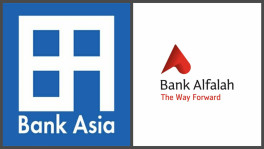The ills of our banking system
NPLs are just the tip of the problem. The main issues are more deeply rooted and if one asks any banking professional in the country, the majority will single out the ‘lack of good governance’

It took me some time to choose an appropriate title for this writeup, as I was struggling to collectively name the problems in the banking system of Bangladesh. Ultimately, I decided on the one above.
Although the word 'ill' used here is usually associated with diseases, it seemed apt to use it in the title as the problems that are persisting in the banking system of Bangladesh have turned into diseases, and those may very well threaten the economic ecosystem of the country if the policymakers fail to effectively address the matters head on.
When it comes to the problems in the banking system, non-performing loans and/or financing facilities (NPLs) have always been singled out as the major problem afflicting the sector in Bangladesh.
But from an industry insider's point of view, NPLs are just the tip of the problem. The main issues are more deeply rooted and if one asks any banking professional in the country, the majority will single out the 'lack of good governance'.
Lack of good governance has negatively affected the sector in several ways. The presence of irregularities can be found in the history of the banking sector in Bangladesh.
But the situation has been greatly aggravated in recent times as the banking and non-banking institutions have slowly turned into playgrounds for the sponsors of such institutions.
The presence of excessive banks also exacerbated the situation as most of the major business houses were able to get hold of stakes in one or more of the banks or non-banking financial institutions (NBFIs).
This gave rise to backroom dealings where a sponsor director of one bank asks the director of another bank to provide his or her business entity loans, and in return, he or she will provide loans to the business entity of the director whose bank has provided that loan.
The sponsor directors of banks and NBFIs in Bangladesh significantly influence the operations of those institutions.
The main basis of the banking system is people's money. The negative performance of any financial institution harms the interests of the people.
The board of directors exists to ensure good governance, and a major part of that role is to separate personal gains from those of the financial institution.
The appointments of businesspeople with vested interests as directors severely affect the judgement of the executives because the executives then need to juggle between the interests of the directors and those of depositors and other financiers.
The profit-mongering attitudes of such directors also push the financial institutions to make risky and aggressive investments, which tend to create pitfalls rather than gardens of wealth for those institutions.
That is exactly why proponents of good governance are asking for the appointments of former banking professionals as representative directors on the boards. Because they have the experience and necessary knowledge about banking operations, client base, as well as the overall market indicators and scenarios to look at in order to make learned decisions.
So far, the multinationals and some of the major local banks and NBFIs are found to be practising good governance.
Another reason that the bankers will point to for the diseases in the system is the existence of too many banks and financial institutions. The existence of too many competitors has already sullied the market conditions.
It is also a fact that most of the newer banks and NBFIs are struggling due to the dearth of quality bankers as the sector has seen exponential growth, whereas the human resource pool has failed to cope with the demand for knowledgeable and experienced bankers for the new seats.
Such a scenario has fundamentally weakened the chief output generator of the banking system.
There are certain organisations in the country that provide good training on banking subjects, but frankly, such institutions are very few in number. A large gap also exists between the reality of the banking sector and the knowledge that our academia provides.
The profit-mongering drive, self-interest-driven interference from the sponsor directors, ill-prepared personnel, and unhealthy competition have fostered issues which are driving the banking system to an uneasy spot. The NPL scenario has been worsened due to unsustainable and aggressive growth drives as well as onboarding of clients without proper assessment.
The influence of the directors as well as the power play by the influential quarters have also given rise to scams, as can be seen in the cases of Basic Bank, Sonali Bank, Farmers Bank, AB Bank, BIFC, International Leasing, People's Leasing, etc.
One major scam in one banking institution should have been enough to sound the alarm bell. But here we have many such cases which have riddled the sector in the absence of credible investigation and steps to punish the actual beneficiaries of such scams.
The goal of financial inclusion has also not been achieved even though we now have sixty-one scheduled banks, five non-scheduled banks and thirty-five financial institutions.
On the other hand, whenever faced with criticism regarding issuance of more banking licences, the authority used to state that the existence of so many banks will ensure financial inclusion in the long run.
The major issue with this failure lies in the fact that the policymakers have failed to distribute the banking channel to other parts of the country, as Dhaka remains the main banking hub.
The policymakers should have directed the third and fourth generation banks to place their head offices in other main divisional cities rather than Dhaka. That would have created an incentive for the banks to develop SME and retail markets in the vicinity of their respective head offices.
When the NPL problem came to the forefront, the bigger banks and NBFIs collectively concentrated on fewer corporate clients, who are the biggest and safest business houses in the country.
This attitude handed unimaginable power to a few business houses, which resulted in those houses setting their own loan conditions rather than the banking system.
In order to seek safe investment opportunities, the banking system started to shun the greater SME sector in the country.
The pandemic situation during 2020–21 has made the banking system more risk averse, which, in turn, is negatively affecting the SME sector. The lending system in the rural economy has also been largely captured by the much more costly Micro Finance Institutes in the absence of a mainstream banking system in such areas.
The pandemic period - although came as a curse for the greater economy - came as a blessing in disguise for the banking system of Bangladesh.
The system was already reeling from NPL and cash flow problems before. The pandemic period resulted in decreased investment activity and government initiatives to increase liquidity to support the economy.
It also gave birth to a much more lenient restructuring/rescheduling methodology and classification reporting system. As such, the situation gave breathing space to the disease-ridden system.
But the illness is once again becoming visible for various reasons including the central bank's 'cautious policy stance with a tightening bias', major inflationary pressure affecting the economy, and the illogical decision to cap the lending as well as borrowing rates of the banking system.
All these have significantly reduced the liquidity in the banking system, especially for the newer entrants. The lending and borrowing rate caps have resulted in an unenviable situation where much safer government instruments such as Treasury Bills and Bonds are paying higher interest rates than the highest deposit rate any bank can provide in the country.
The overall interbank lending rate is providing less return than the investments in government instruments, which has resulted in the major banks with higher liquidity investing in government instruments rather than providing treasury support to the banking system.
The lending-deposit rate cap has also significantly reduced the profitability of the banking system, which, compounded with the NPL, is seriously affecting the overall health of the system. Such an untenable policy cannot be maintained in the long run if the authorities truly want to protect the banking system.
Bangladesh is now standing at an important juncture in its history as it is on the verge of attaining middle-income status. To properly guide the country to a better position, it is needed to upgrade the economy, and that will not be possible without the existence of a vibrant and sustainable banking system.
The diseases that have riddled the system will become a major threat to the economy very soon. The matter should be addressed now with the utmost attention. A dedicated banking commission to address the irregularities will bring good changes.
Giving complete freedom to the central bank in governing the sector will greatly improve the situation. Ill-advised meddling, such as imposing interest rate caps, should not be allowed to take place.
Decentralisation of the Dhaka-based banking system will also result in greater financial inclusion and greater development of the rural economy.
With effective policy proposals and implementation guidelines in place, the banking system will be able to get rid of its problems and become a powerful support system for the economy. Timely decisions are needed now to get rid of this illness tormenting the banking system of Bangladesh.

Aamer Mostaque Ahmed leads the Structured Finance Division of a reputed multinational NBFI and is the Executive Director of Youth Policy Forum.
Disclaimer: The views and opinions expressed in this article are those of the authors and do not necessarily reflect the opinions and views of The Business Standard.


 Keep updated, follow The Business Standard's Google news channel
Keep updated, follow The Business Standard's Google news channel
















